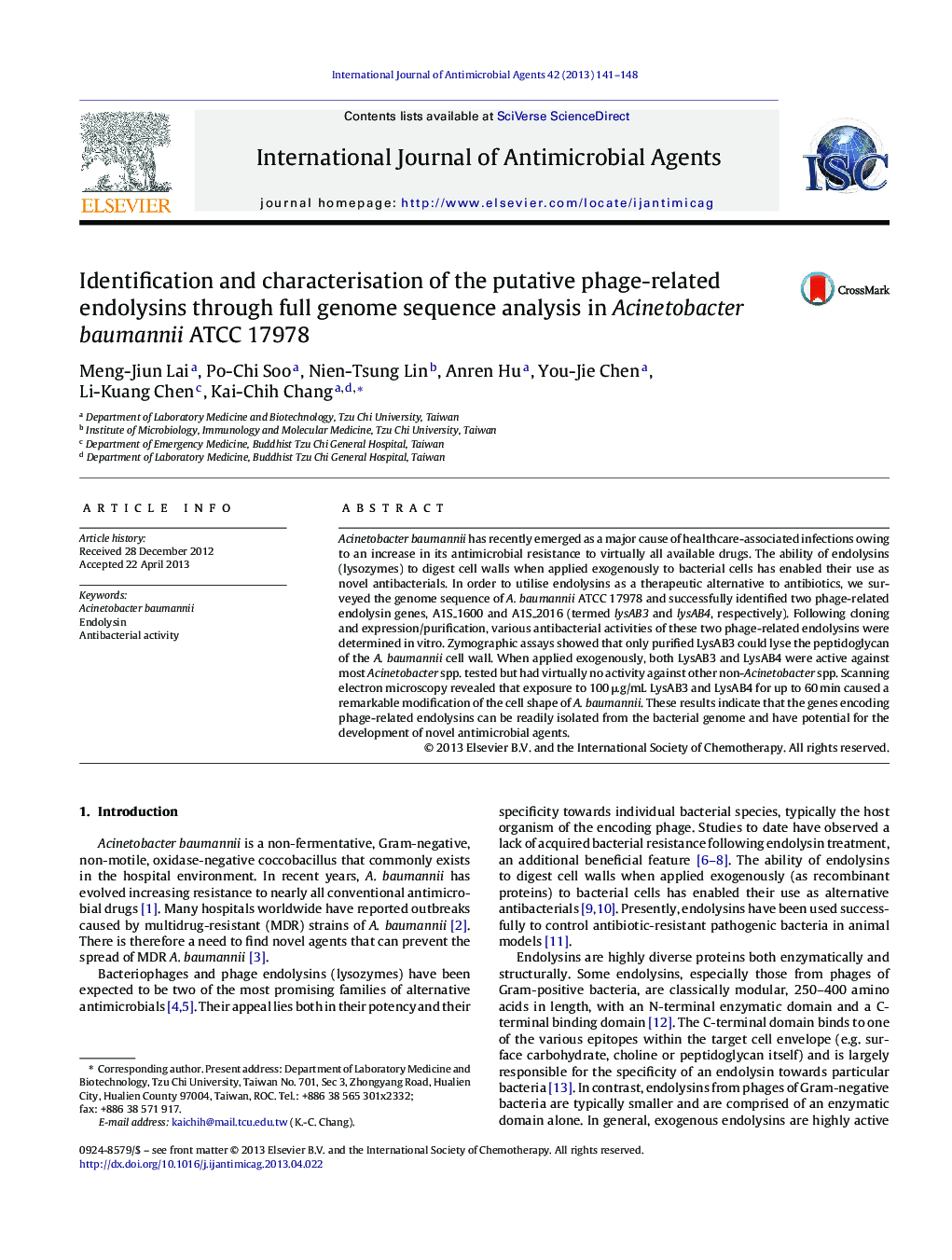| Article ID | Journal | Published Year | Pages | File Type |
|---|---|---|---|---|
| 3358719 | International Journal of Antimicrobial Agents | 2013 | 8 Pages |
Acinetobacter baumannii has recently emerged as a major cause of healthcare-associated infections owing to an increase in its antimicrobial resistance to virtually all available drugs. The ability of endolysins (lysozymes) to digest cell walls when applied exogenously to bacterial cells has enabled their use as novel antibacterials. In order to utilise endolysins as a therapeutic alternative to antibiotics, we surveyed the genome sequence of A. baumannii ATCC 17978 and successfully identified two phage-related endolysin genes, A1S_1600 and A1S_2016 (termed lysAB3 and lysAB4, respectively). Following cloning and expression/purification, various antibacterial activities of these two phage-related endolysins were determined in vitro. Zymographic assays showed that only purified LysAB3 could lyse the peptidoglycan of the A. baumannii cell wall. When applied exogenously, both LysAB3 and LysAB4 were active against most Acinetobacter spp. tested but had virtually no activity against other non-Acinetobacter spp. Scanning electron microscopy revealed that exposure to 100 μg/mL LysAB3 and LysAB4 for up to 60 min caused a remarkable modification of the cell shape of A. baumannii. These results indicate that the genes encoding phage-related endolysins can be readily isolated from the bacterial genome and have potential for the development of novel antimicrobial agents.
